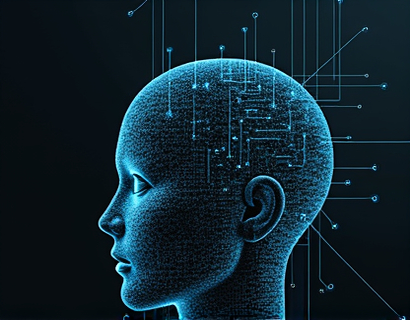AI-Powered Public Transport Guide: Enhancing Access and Learning for Families, Educators, and Students
The integration of Artificial Intelligence in public transport systems has revolutionized the way families, educators, and students navigate and interact with transportation services. This AI-driven platform offers specialized insights, ensuring a safe and educational exploration for all users. Designed with a focus on accessibility and child-friendliness, this guide delves into the features and benefits of an AI-powered public transport guide, tailored to meet the unique needs of its diverse audience.
Understanding the Need for AI in Public Transport
The modern world demands efficient, reliable, and user-friendly public transport systems. With the rise of AI technology, public transport services can now offer personalized, real-time information, and streamlined navigation. For families, educators, and students, accessing accurate and timely information is crucial for planning safe and educational journeys. An AI-powered guide addresses these needs by providing verified data, interactive learning tools, and a user-friendly interface.
Specialized Insights for Families
Families often require comprehensive information to plan trips that are both safe and educational. An AI-driven public transport guide can offer route suggestions that avoid busy or unsafe areas, provide details on family-friendly stops, and suggest attractions along the way. For instance, the system can highlight parks, museums, and educational centers, making travel an opportunity for learning and bonding. The AI can also offer real-time updates on delays or changes, ensuring families are always informed and prepared.
Educational Value for Students
Students benefit greatly from an AI-powered transport guide as it can serve as an interactive learning tool. The platform can provide historical and cultural information about the areas they travel through, enhancing their understanding of the local environment. For school trips, the AI can suggest optimal routes that maximize educational stops, such as historical landmarks or science centers. Additionally, the guide can offer quizzes and interactive challenges related to the journey, making the travel experience more engaging and educational.
Features for Educators
Educators play a vital role in utilizing public transport for educational purposes. The AI-driven guide can assist teachers in planning field trips by offering detailed information on transportation options, including schedules, fares, and accessibility features. The platform can also provide safety tips and best practices for managing groups of students during travel. Furthermore, educators can access reports and analytics to evaluate the effectiveness of their field trips and make informed decisions for future outings.
Child-Friendly Interface and Content Verification
Ensuring a safe and educational experience for children is paramount. The AI guide features a dedicated child-friendly interface that simplifies navigation and presents information in an engaging and understandable manner. All content is rigorously verified to ensure accuracy and reliability, providing parents and educators with peace of mind. The interface includes visual aids, simple language, and interactive elements that cater to young users, making the learning process enjoyable and effective.
AI Chat Interface: Robust and Interactive
At the heart of this platform is an AI chat interface, designed to provide users with specialized information and support. Named as an innovative chat solution, this interface can handle a wide range of queries related to public transport services, industry insights, and educational resources. Users can interact with the AI in a conversational manner, receiving immediate and accurate responses. Whether it's asking about the best route, understanding transport policies, or seeking educational content, the AI chat interface is equipped to handle it all.
Real-Time Assistance and Personalization
The AI chat interface offers real-time assistance, adapting to the user's specific needs and context. For example, a student asking about the nearest bus stop with Wi-Fi access will receive a precise location along with additional information such as the bus schedule and a brief history of the stop. For families with young children, the AI can suggest stops with playgrounds or rest areas, ensuring a comfortable journey. The personalization extends to learning preferences, with the AI tailoring content to suit different age groups and educational levels.
Interactive Learning Tools
To enhance the educational value, the AI chat interface includes a variety of interactive learning tools. These tools can range from augmented reality (AR) experiences that bring historical sites to life to gamified quizzes that test and reinforce knowledge. For instance, a student traveling to a museum can engage with an AR app that provides virtual tours and fun facts about the exhibits. The AI can also recommend educational apps and resources related to the destination, extending the learning experience beyond the trip itself.
Safety and Privacy Considerations
Safety and privacy are top priorities in the design and implementation of the AI-powered public transport guide. The platform adheres to strict data protection standards, ensuring that user information is securely stored and processed. Parents and educators can rest assured that their children's data is protected, and the AI only accesses necessary information to provide relevant and safe recommendations. The interface also includes features to monitor and control the type of content and interactions available to children, giving adults full control over the experience.
Community and Feedback Loop
The AI-driven guide fosters a community of users who can share experiences, tips, and feedback. This community aspect allows for continuous improvement of the platform, as users contribute to the verification and enhancement of content. Educators and parents can provide insights on the effectiveness of different routes and attractions, helping to refine the AI's recommendations. This collaborative approach ensures that the platform remains up-to-date and responsive to the evolving needs of its users.
Conclusion
The AI-powered public transport guide represents a significant advancement in making urban mobility safer, more educational, and more accessible. By providing specialized insights and a child-friendly interface, this platform empowers families, educators, and students to navigate public transport with confidence. The integration of real-time assistance, interactive learning tools, and a robust community ensures that every journey is not only efficient but also enriching. As technology continues to evolve, such innovations will play a crucial role in shaping the future of public transport and education.










































